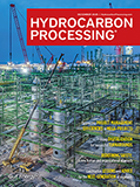Johnson, B.
Bill Johnson provides technical support for the Customer Support Solutions group at John Zink Hamworthy Combustion, where he has worked since 1977. He has been an instructor for the John Zink Institute for more than 35 yr. Mr. Johnson has co-authored numerous technical papers for the HCPI industry and is the lead author on several chapters in The John Zink Hamworthy Combustion Handbook.
Getting the most out of your process burner tiles
It is often incorrectly assumed that the burner tile is simply a piece of refractory or firebrick. Nothing could be further from the truth.
Good, bad and ugly process burner flames
As part of the U.S. Environmental Protection Agency’s (EPA’s) maximum achievable control technology (MACT) fired heater inspection program, the authors’ company has inspected nearly 1,000 heaters since the program started in 2015. These inspections have revealed all types of flames—the good, bad and ugly. Here, good is defined as no changes are needed; bad is defined as changes are needed where the conditions are not likely dangerous; and ugly is defined as immediate changes are needed because the conditions are potentially dangerous.
Minimize unplanned shutdowns of fired heater operations
There are many potential “rules,” or guidelines, for the safe operation of process heaters.
- 1
- ... 1 pages

- Corteva and bp launch biofuel feedstock joint venture Etlas™ 1/7
- BASF starts up 1-MMtpy ethane cracker at Verbund site in Zhanjiang, China 1/7
- Larsen & Toubro delivers first feed to HPCL's 3.55-MMtpy LC-Max residue upgrading facility 1/7
- Borouge advances industry-first AI autonomous operations at Ruwais facility 1/7
- U.S. refiners to benefit from Venezuelan crude oil imports 1/7
- Verdant Specialty Solutions completes acquisition of Lubrizol’s Elmendorf, Texas (U.S.) manufacturing and R&D assets 1/7





